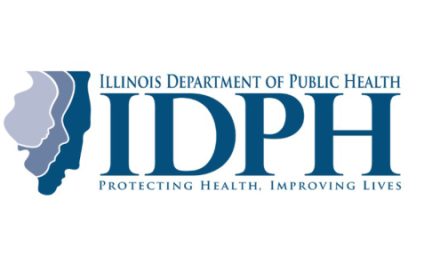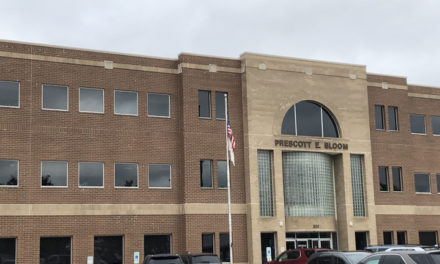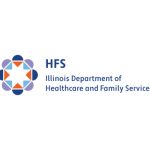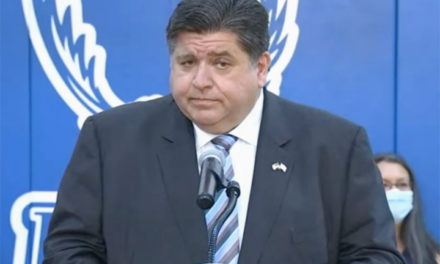
On the record with Memorial Health CEO Ed Curtis
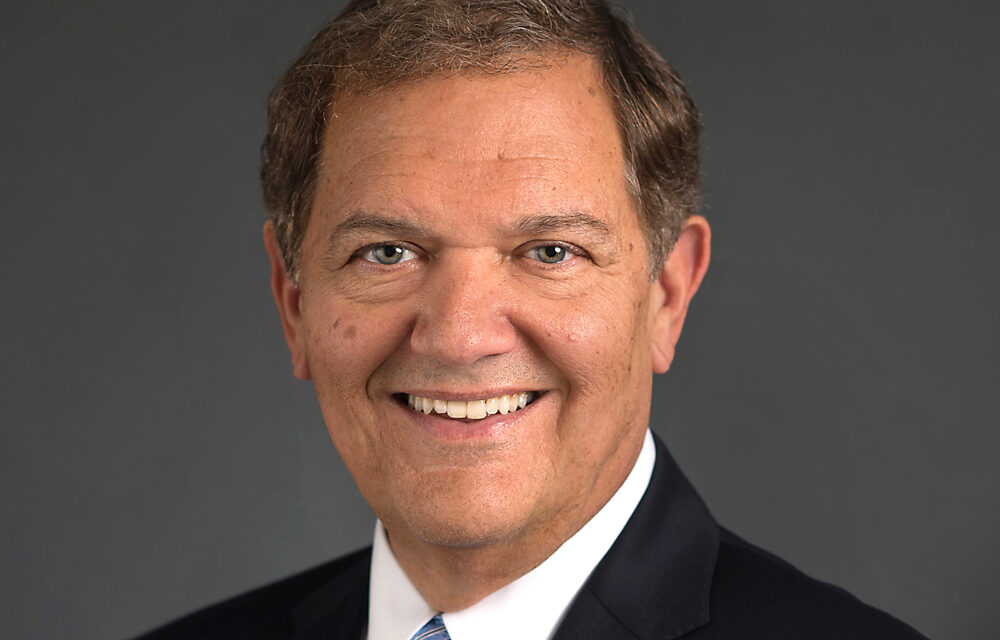
As his health system comes out of the COVID-19 pandemic, Memorial Health CEO Ed Curtis said they are “laser-focused” on further integrating its five hospitals and dozens of clinics across central Illinois.
Curtis, who has led the Springfield-based health system since 2008, told Health News Illinois the “One Memorial” initiative is a vital piece to ensuring the community knows they will find consistent care at any of Memorial’s facilities. It also comes just over a year since its rebranding as Memorial Health.
Curtis also spoke on partnerships with local organizations like Southern Illinois University School of Medicine to help support the region’s workforce, the state of healthcare in central Illinois and future plans for the health system.
Edited excerpts below:
HNI: Can you tell me a bit more about the “One Memorial” initiative and the work being done to further integrate the system?
EC: I think as you come out of a pandemic, it’s pretty important to be laser-focused on your strategic plans. We, our board, changed our strategic plan and really wanted to fine tune our strategy, and one of the key components — one of the five components of that — is to really continue to make progress around, ‘What’s One Memorial?’ Meaning things like, if you have five hospitals, we got an ambulatory group of physician practices, it’s something as simple as everybody’s on the same electronic health record, everybody’s on the same payroll systems.
I want to take it back to why do it: It’s about patient care. Because if you’re an elderly person in a small community where there’s a rural hospital in Lincoln, Ill., and you have a great experience in the (emergency room), and now somebody walks in and says ‘Hey, we need to transfer you to a higher level of care in Springfield, Ill.,’ your anxiety is going to go up because you’re pretty comfortable there. People are really nice to you. Now all of a sudden, we’re going to put you in some sort of Medi-car or ambulance and move you somewhere else. It sure would be nice if people look the same, act the same and document the same.
I use the analogy of Starbucks. When I drive up to Starbucks and order a Mocha Latte or a chocolate latte, whether you’re in Springfield, Chicago or Seattle, you’re pretty much going to get the same thing. It’s even going to be in the same cup, and the people serving it will look the same. I know we’re not making coffee, we’re doing something pretty important here. That’s really what we’re looking for with One Memorial, to make people feel like you have an integrated system where the care is consistent across the organization.
HNI: We’re a little over a year since the rollout of the “Memorial Health” rebrand. How has that gone so far, alongside the system integration?
EC: Our new strategic plan is called Destination 2025. And we did that for a purpose. Over the next three years, we want to make sure that we’ve accomplished all this work. So I’d say we’re well on the way and we got another two more hospitals that are coming onto the (electronic health records) this month, so we keep making progress. Electronic health records is one thing, but there are many things that we’re doing … So we’ve done some imaging around (the) brand, which is good for us and I think it’s good for the consumer. Really, this is about finding care, both ambulatory care and patient care, and doing as much as we can where we just have that seamless care depending on where you’re at in the Memorial system.
HNI: One topic at the forefront of the healthcare industry is workforce. Memorial has a number of partnerships with organizations like SIU School of Medicine. How have those helped to address workforce?
EC: We had workforce challenges in healthcare pre-pandemic. Why? Because of the baby boomer generation, people are retiring in this country at 10,000 a day. There are not enough people in the generations behind to pick up all those slots, so we need to get a greater share of people interested in healthcare. Now the good news, and nursing is an example, there are still far more people in nursing and medical school interested than there are enough slots available. So if you could expand slots, that would be a good thing. So pre-pandemic, we went out with six junior colleges and universities, we engaged and we gave them capital so that they could either expand their facilities or hire more faculty. So that instead of 1,000 qualified applicants that can’t get in, we can expand the number of training slots here in central Illinois because, on average, people don’t travel more than 10 or 12 miles from where they train for their first job. So we need to train more people in central Illinois if we’re going to get him to work here. We had that implemented. We’ve added 400 of the 500 additional pre-licensure registered nursing training slots right here in the area. The others are are going to come on at Illinois State University in August. So we’re investing a lot, but nursing is one occupation. Why did I pick nursing? Because it’s the largest number of employees that we, in healthcare, hire. One in five of our employees are registered nurses. We need more. And the pandemic is one of several things that have caused to maybe even accelerated people to leave the workforce. But we had started that pre-pandemic, and we’re having great success with it. We need to keep it up.
HNI: What are some of the challenges of getting people into the workforce?
EC: I think one of them that we’ve seen, just because of the pandemic, is resilience in society seems to have diminished. People are not as patient with each other, as kind to each other. And we’ve seen a little increase in violence — not at Memorial. This is national, this is Illinois. A lot more assault and battery is occurring in the workplace. It’s in emergency medicine, but it’s also in the (intensive care units), it’s in the medical-surgical areas, it’s in the ambulatory spaces, it’s throughout the healthcare enterprise. And one is too many. So it’s still a very small percentage of the patients we interact with, but nobody wants to come to work today and get hit or shoved or attacked at work because somebody’s angry. And so that’s an example of what’s happened post-pandemic, where people are going, ‘Wow, this is kind of different.’ So for the most part, people want to work in healthcare. They love the mission. They love helping other people, they want to serve. So I’m not saying people don’t want to be involved in healthcare, but there are little things that go on that might give people pause to say, ‘Now, wait a minute, do I have to put up with that? Do I have to put up with somebody yelling at me?’
HNI: What more can policymakers do to help providers when it comes to workforce?
EC: They’re all aware, they all understand. I think there’s a lot going on in higher education to give people more opportunities to go to college. But I will say this … I’m equally concerned about the trades. Not everybody has to go to college. We’re building buildings and doing work, and we don’t have enough concrete finishers or enough electricians or enough plumbers or enough laborers or enough carpenters. So with some of our partners in the community, there’s a large construction company for the same pipeline programs with the schools. So I’m just saying every occupation — I can’t build new facilities if I don’t have workers, and there’s some wonderful career opportunities that don’t require you to go to a four-year college.
HNI: How do you see the state of healthcare in central Illinois?
EC: I’m very proud of healthcare in the region. You know, 50 years ago, a medical school came to the community. It was the really first downstate medical school outside of the greater Chicago area, Southern Illinois University. And their mission is to care for the 66 counties of central and southern Illinois. And when you’ve been around 50 years, you’ve turned out a lot of graduates who go into primary care and specialty care and stay in their own state. And then they refer back in here for some specialty or quaternary care. They’ve been known for and what they’re really doing is educating Illinois students, so this medical school is for Illinois students. A lot of them go back to their communities and that’s been instrumental. So as a result of that, it’s made Memorial a more dynamic, larger organization. (Hospital Sisters Health System), Springfield Clinic, the medical school have all grown. It’s become a medical destination here in central Illinois. And let’s be direct about this: Most people don’t want to stray too far from home to get their healthcare if they can. And I think it’s quite a healthcare enterprise here in central Illinois, and I think a big part of it goes to having a medical school that has made all the rest of us a little bit more robust than we were 10 years ago, 20 years ago. A lot more things are available in the community that you just simply don’t have to leave for now.
HNI: There has been a focus coming out of the pandemic on partnerships between providers and systems to provide care. How important is that partnership across the region’s systems, and are we seeing some of that in central Illinois already?
EC: I think the pandemic even accelerated partnerships more so. You think about the onslaught for vaccination and all the amount of testing that was being done in creating these drive-thru facilities for people to test and treat people during the pandemic. I saw a heightened spirit of cooperation between hospital systems, large multi-specialty clinics, because all of us realize we had to work together with a limited workforce to be able to meet this huge demand. And I’ve just seen that continue to occur where the spirit of cooperation is pretty high. It’s really about where are the things that we can legally collaborate on, and there are a lot of them. It’s really around providing the best care to patients.
HNI: What are the future plans for Memorial Health?
EC: It’s all centered around Destination 2025, which is where we are going to try to create this One Memorial concept in the spirit of improving care to the consumers in the area. Healthcare is very expensive, and so anything that we can do to mitigate the cost increase that occurs in healthcare is all part of our Destination 2025. As a result of the pandemic and the labor shortage, you saw what happened with a lot of temporary requirements for a workforce that really accelerated the inflation in our industry around the labor supply. Labor is a very intense part of healthcare.
Hospitals work in a world with a lot of government payers. Medicare and Medicaid are probably 70 percent of the number of patients we touch in the hospital. It’s a pretty inelastic revenue model. It doesn’t move too much because the government sets its rates. We’ve seen double-digit increases in labor costs because of all the temporary requirements. That can get your finances upside down really fast. So fiscal (year) 2021 was the best year in our history. The fiscal (year) 2022 was the worst year in our history.
And what was the one change? Sudden reliance on temporary help that wasn’t there prior to that. As a result, right now, for health systems in the country, from Harvard to Cleveland Clinic, probably 70 percent of health systems had some sort of a loss from operations. And everybody’s really focused on what are you going to do to get your expense line to grow less than your revenue growth line. And until you do that, that’s really where you need to be focused. And it’s really getting a handle on how do we hire more people for these permanent roles with less reliance on temporary labor at a premium cost.
HNI: Do you see future growth or expansion in the cards for Memorial?
EC: I’ll put it like this. We have a lot of people over time that’ll call us and say, ‘Hey, what about? Could you talk to us?’ Et cetera. For us, it needs to make strategic sense. In other words, contiguous communities where we think we would add value for us. We’re a relatively smaller health system. We’re right at $1.6 billion of net revenue for the year we’re in. We have five hospitals. We have 31 ambulatory sites of care. We’re all pretty contiguous here in central Illinois. So we’re not looking to get bigger just for the sake of getting bigger. There’s nothing in the offering right now. You might ask the question, ‘Well, you see all the stuff going on nationally, would you ever become part of a bigger system?’ Our board doesn’t see a need for that. Healthcare is local. We have local governance. As long as we can provide good care in the communities, I think we’ll probably continue down the path we are on at the present time.

